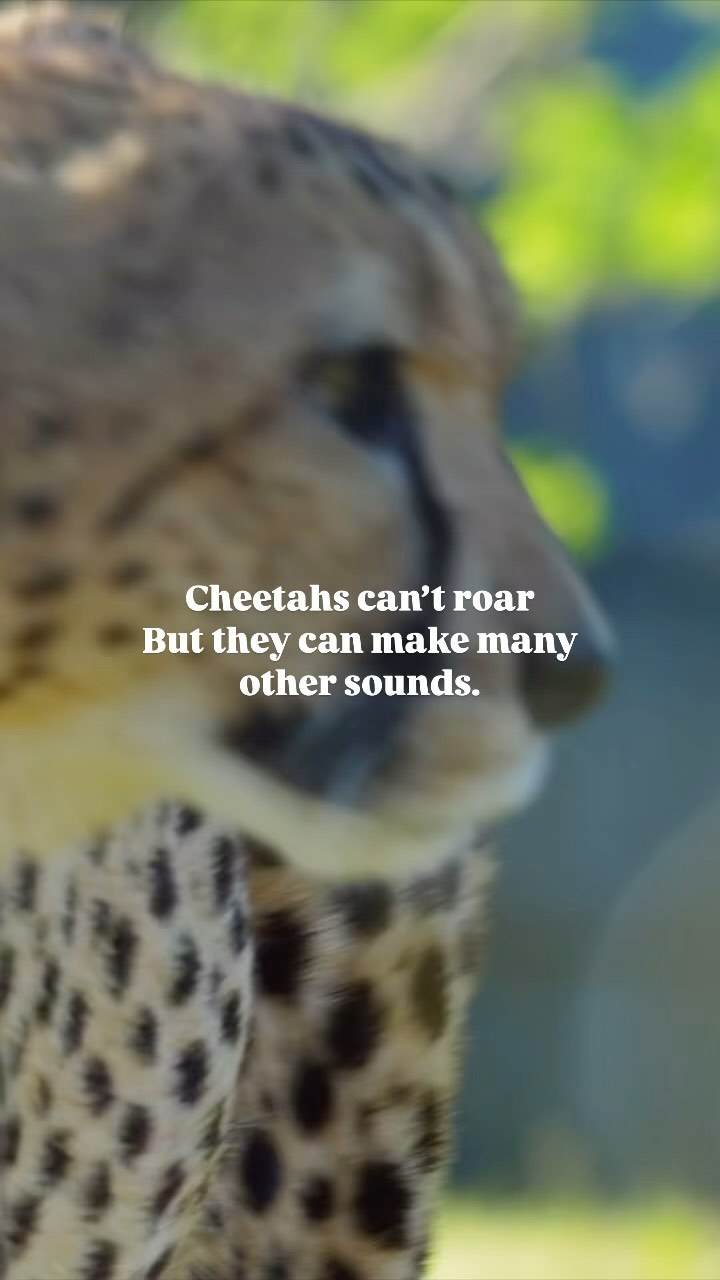- Cheetahs have a unique ability to purr, similar to domestic cats, due to the presence of the epihyal bone in their throat structure.
- Adult cheetahs primarily communicate using chirping sounds, yet they also possess the ability to yelp, purr, and hiss for various communicative purposes.
- The vocal communication of cheetahs is particularly significant for mother-cub interactions, facilitating bonding and teaching.
- Understanding the purring of cheetahs can enhance conservation strategies, helping to protect and manage this at-risk species.
- Detailed knowledge of cheetah vocalizations aids in both the management of captive populations and the conservation of wild populations.
The cheetah, an icon of speed and grace, possesses a variety of vocal skills that are fascinating and crucial for their survival in the wild. Among these vocal abilities is the capacity to purr, a trait they share with domestic house cats, owing to a similar anatomical feature: the epihyal bone. This small, rigid bone is part of their throat structure, allowing them to produce the soft, continuous sound known as a purr. Cheetah purring typically occurs in contexts of relaxation and contentment, much like in domestic cats, and offers insights into their emotional states.
Cheetahs employ a wide range of sounds for communication beyond just purring. Chirping is the primary vocalization for adults, resembling a bird-like sound that contrasts sharply with the roars of other large cats. This distinct call is used chiefly in social communication, especially between mothers and their young. A mother cheetah chirps to call her cubs, drawing them closer or summoning them from hiding. The chirping sound can travel over long distances, even through the dense savannah vegetation, ensuring her offspring can locate her even when visual contact is not possible.
Despite chirping being the main mode of communication, cheetahs can also make yelping, purring, and hissing noises. The yelp, a high-pitched call, serves as both a warning and an alert signal, often indicating danger or conveying distress. Hissing, on the other hand, is a defensive noise made by cheetahs when they perceive threats or engage with other animals over territory disputes. It is a versatile vocal repertoire that ensures the survival of these animals by facilitating a wide range of interactions with both cheetahs and other species.
The relationship between mother and cubs is vital for the survival of the young. Vocal communication plays a pivotal role in this relationship, crucial for their growth and learning. Various sounds guide cubs in behavioral development, while purring often helps calm and reassure them. The auditory signals enhance bonding, impart survival skills, and convey a sense of safety to the young, fragile cubs. Understanding these interactions is crucial for conservationists aiming to protect cheetah populations, as they provide insights into nurturing practices and social structures of this species.
From a conservation perspective, scientific understanding of cheetah vocalization is illuminating aspects of their behavior previously unknown. Recognizing the contexts in which cheetahs use different sounds can help design interventions to reduce tensions in captivity, enhance breeding programs, and improve reintroduction strategies for wild populations. It becomes evident that we must comprehend the nuances of cheetah communication to craft effective conservation programs aiming to bolster their numbers in the wild and under human care.
In zoo management, the capacity to interpret purring and other sounds can guide handling techniques and improve animal welfare. Each vocalization corresponds to specific behaviors and emotional states, allowing zookeepers to provide tailored care by creating environments that align with these states. For instance, detecting distress signals early can prevent escalations of aggression or fear-based behavior, reducing stress for both animals and handlers.
Environmental stewardship combined with wildlife conservation involves intricate networks of communication not only among animals but between humans and wildlife. By embracing the nuances of cheetah sounds, conservationists can advocate for more effective protection strategies. These efforts focus not only on preserving these magnificent cats but also on sustaining the fragile ecosystems that support their existence.
In summary, the vocal abilities of cheetahs are as remarkable as their renowned speed. Through understanding the scientific and behavioral implications of their complex vocalizations, we glean valuable insights that foster both their preservation in the wild and their management in captivity. Cheetah communication, especially their purring capacity, underscores the delicate balance of nature, emphasizing the importance of ongoing research and conservation endeavors. By fostering a deeper appreciation of these unique cats, we take crucial steps toward ensuring their continued survival.
*****
Source Description
Cheetahs purr, like house cats they have the epihyal bone. 🐆
Even adult cheetahs communicate mostly through chirping sounds, though they can also yelp, purr and hiss. verbal communication is mainly used between mother and cubs, but may also be used as a warning or to signify danger


